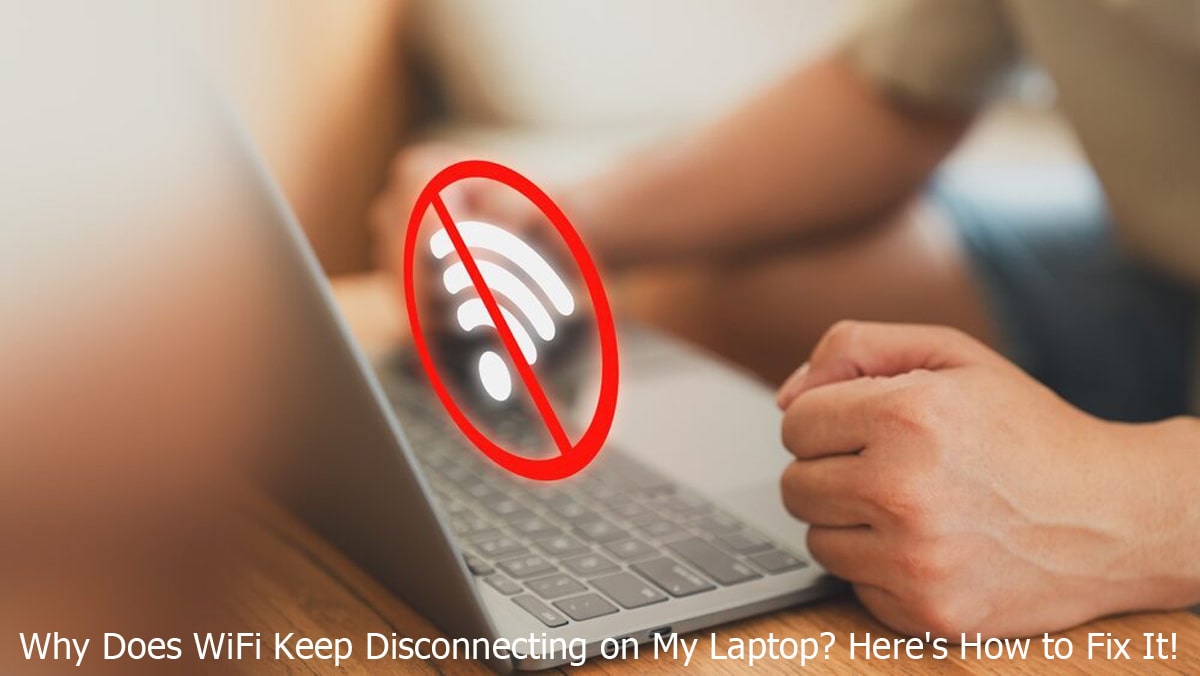Nothing’s more annoying than being in the middle of a Zoom call, online game, or work session—and boom, your laptop’s WiFi just drops out of nowhere. Don’t worry, you’re not alone. Many users deal with this pesky issue, and the good news is: it’s usually fixable.
In this guide, we’ll walk you through the common reasons why your laptop keeps disconnecting from WiFi and, more importantly, how to fix each one.
Common Reasons Why Your Laptop Keeps Disconnecting from WiFi
1. Weak WiFi Signal
If you’re far from your router or have walls blocking the signal, your laptop might struggle to stay connected.
Fix:
- Move closer to the router.
- Avoid physical obstructions (walls, metal furniture).
- Use a WiFi extender if needed.
2. Power Saving Settings
Your laptop might be turning off the WiFi adapter to save battery—especially on Windows laptops.
Fix:
- Press Win + X, select Device Manager.
- Expand Network adapters, right-click your WiFi adapter > Properties.
- Go to the Power Management tab.
- You can save electricity by unchecking the option next to “Allow the computer to turn off this device.”
- Click OK and restart.
3. Outdated or Corrupt WiFi Drivers
Old or broken drivers can mess with your laptop’s connection.
Fix:
- Open Device Manager → Network adapters → Right-click WiFi adapter → Update driver.
- Or go to the website of the company that made your laptop to manually download the most recent driver.
4. WiFi Channel Overlap or Interference
Your neighbor’s WiFi might be clashing with yours, especially on the 2.4GHz band.
Fix:
- Access your router settings (usually at 192.168.1.1).
- Change the WiFi channel to something less crowded (like 1, 6, or 11).
- If supported, switch to 5GHz which is less congested.
5. Wrong or Corrupt DNS Settings
Your laptop might be trying to resolve addresses through a DNS that’s slow or broken.
Fix:
- Go to Control Panel > Network and Internet > Network Connections.
- Right-click your WiFi > Properties > Select IPv4 > Click Properties.
- Choose: “Use the following DNS server addresses”
- Preferred: 8.8.8.8
- Alternate: 8.8.4.4 (Google DNS)
- Preferred: 8.8.8.8
6. Router Glitches or Firmware Issues
Sometimes your router just needs a reset or a firmware update.
Fix:
- Do a power cycle by turning your router off for 30 seconds and then turning it back on.
- Go to the router’s settings and see if there is a firmware upgrade available.
7. Too Many Devices on the Same Network
Your WiFi might be overloaded—especially if you live in a crowded home.
Fix:
- Limit background downloads and device usage.
- Enable QoS (Quality of Service) on your router to prioritize important traffic (like Zoom or Netflix).
8. Windows Network Stack Problems
Sometimes, Windows just needs a reset under the hood.
Do the following at the Command Prompt (as admin) to fix it:
bash
SalinEdit
netsh winsock reset
netsh int ip reset
ipconfig /release
ipconfig /renew
ipconfig /flushdns
After running these commands, restart your laptop.
9. Faulty WiFi Adapter Hardware
If you’ve tried everything and nothing works, your WiFi adapter might be dying.
Fix:
- Try using a USB WiFi dongle as a workaround.
- If it works fine, then it’s likely a hardware issue with your internal WiFi chip.
10. Your ISP is the Problem
Let’s not forget—your internet provider might be to blame.
Fix:
- Check if your phone or other devices also lose connection.
- If that’s the case, check for service interruptions or get in touch with your ISP.
Bonus Tips to Prevent Future Disconnections
- Keep your system and drivers up to date.
- Regularly restart your router (once a week is good).
- Use a strong WiFi password to prevent freeloaders.
- Avoid using VPNs unless necessary—they sometimes cause drops.
- If you’re a heavy user, consider upgrading your router or internet plan.
Final Thoughts
WiFi dropping on your laptop isn’t just frustrating—it’s disruptive. But in most cases, it’s not a hardware failure. Whether it’s your settings, your router, or just outdated drivers, you now have a full toolkit of fixes to try.
Still stuck? Try using a USB WiFi adapter or connecting via Ethernet to narrow down the cause. And don’t be afraid to ask a techie friend (or YouTube) if you need a visual walkthrough.
Stay connected—and good luck!



